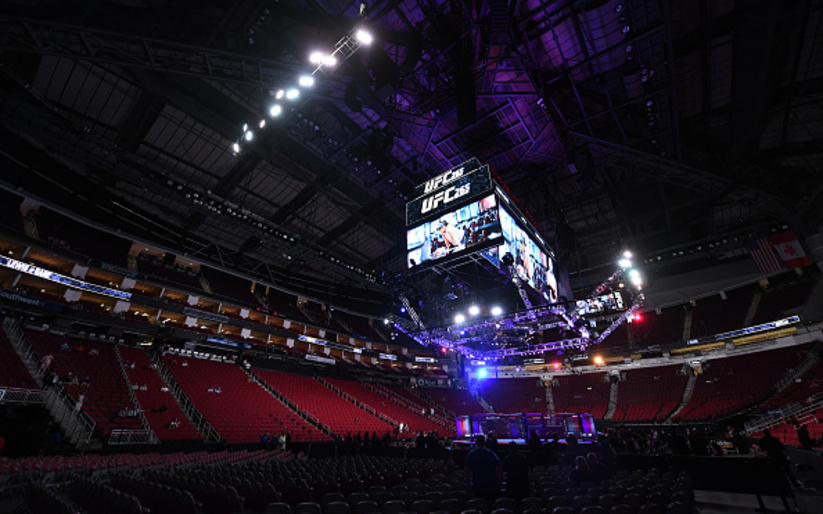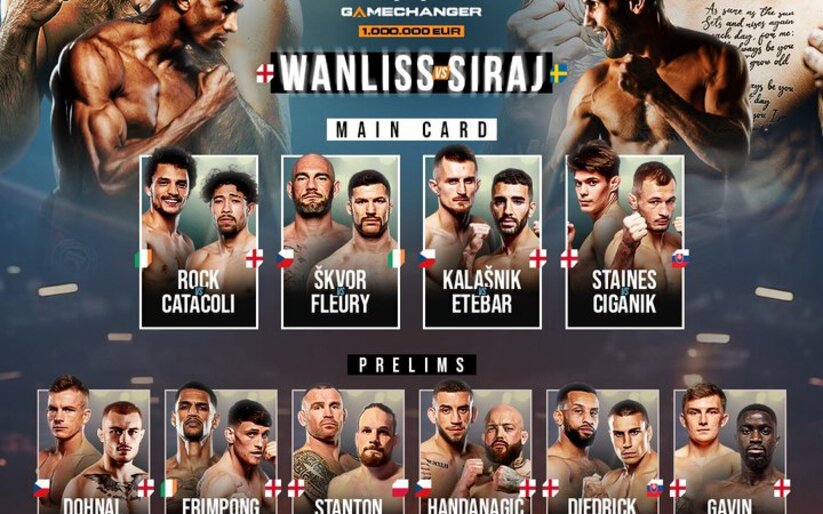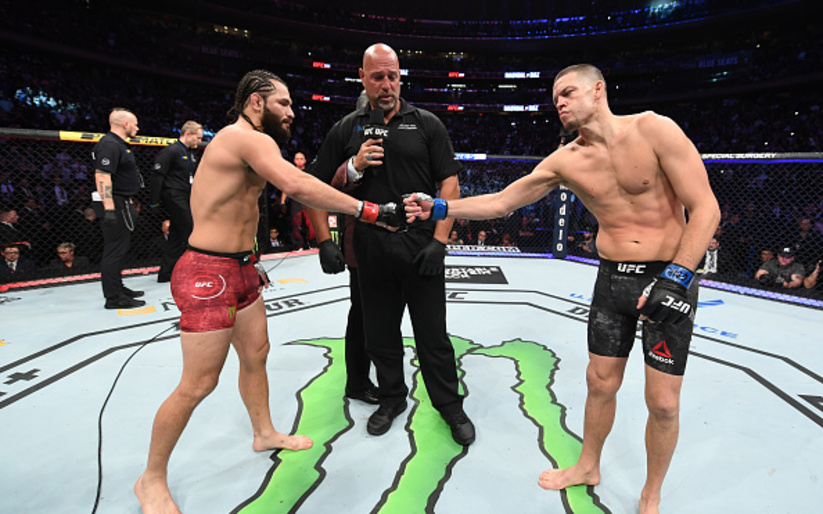Japan has some of the richest traditions in combat sports. Between kickboxing and mixed martial arts alone countless unforgettable moments have taken place in the land of the rising sun.
During this series I will be documenting the history of the sport. When I left off last I spoke of the infamous match from 1954 where submission magician Helio Gracie received a taste of his own medicine, losing to Japanese Judoka Masahiko Kimura.
You have to understand that mixed martial arts wasn’t even close to being a sport, or even a term coined at this stage. Even in the early 1990’s it wasn’t known as MMA, being referred to as shoot-fighting or ultimate fighting.
It wasn’t until 1995 that Rick Blume, the president & CEO of the defunct organization Battlecade Extreme Fighting gave it that term.
As you can imagine, the only combat sport that mattered during this time was professional boxing – In the early shades of the 1960’s heavy-handed striker Sonny Liston was seemingly invincible following his back-to-back defeats of 1952 Olympic boxing champion Floyd Patterson.
That was until he met up with an arrogant, charismatic man named Cassius Clay, who would later go on to capture the imaginations of the world under the moniker Muhammed Ali.
Now I don’t feel I have to explain to anyone how important Muhammed Ali was to boxing, he could talk anyone into a building even if he was only going to fight a broomstick. He had the physical skills to back up what he was saying too.
Ironically enough, the next historic moment in the timeline features Ali facing off with legendary professional wrestling figure Antonio Inoki in what is considered the most embarrassing point in the career of the greatest heavyweight boxer of all-time.
When their boxer vs. wrestler match went down in 1976 Antonio Inoki was the biggest star in Japanese professional wrestling and was out to prove that wrestling was the greatest combat sport. A year prior he had defeated Olympic Judo Gold Medalist Willem Ruska to begin his claim and had arranged to fight karate black-belt Willie Williams by years end.
As I mentioned in the previous issue, professional wrestling wasn’t exposed like it is today at this point, especially in Japan where it was (and to an extent still is) treated as a legitimate sporting event.
At this time, Ali was at the highest peak of his stardom as he was merely a year removed from the infamous third encounter with recently deceased boxing icon Joe Frazier dubbed “The Thrilla in Manila.”
This bout arose due to a confrontation between Ali and Ichiro Hatta, the president of the Japanese Amateur Wrestling Association where the Hall-of-Famer bragged that “Isn’t there any Oriental fighter who will challenge me? I’ll give him one million dollars if he wins” which garnered world-wide headlines.
Inoki was quick to accept the challenge, offering him $6 million to come to face him on his home soil in Tokyo, Japan.
The fight was broadcast in 34 countries around the world to an estimated audience of 1.4 billion people who were left extremely disappointed. When all was said and done, the real losers were the fans.
Two days before the fight went down they announced several rule changes shortly after — The rule changes were absurd, including that Inoki cannot throw, grapple or tackle Ali to the mat and the one that had the most impact, the Japanese sensation was only able to kick if he had one knee on the mat.
For most of the fifteen rounds of action, Inoki was on his back kicking Ali over and over again because he was unwilling to strike with the social activist who threw less than a dozen punches during the fight.
When all was said and done the bout was declared a draw with Inoki being three-points up on the cards but was docked those points for fouls. This was a desperate attempt to have nobody lose face but nobody in the arena bought it who threw rubbish from the crowd chanting “Money back! Money back!”
A decade later the Shooto promotion that is still around to this day opened its doors for business – Shooto is the brain-child of Satoru Sayama, better known by professional wrestling persona Tiger Mask.
Sayama looked to create a sport that revolved around a fighting system that was dubbed “shooting” which is taken from the wrestling jargon handbook with a shoot-fight meaning a serious or real fight.
The first-ever amateur Shooto event was held in 1986 followed only three-years later by the first-ever “professional shooting” event. Although Sayama has not been a part of the organization since 1987 his original image has moved forward and has been the catalyst to success for some of Japan’s biggest stars.
To become an elitist in the Shooto circuit you first have to start cutting your teeth on the smaller events that take place all over Japan, winning regional tournaments beginning as a Class-D fighter in small gyms fighting for crumbs and working your way up to being a Class-A Shooter anointing you as an elite professional fighter.
This is a process that has groomed more notable names in the sport than I could list in three days with 16 pots of coffee.
Shooto were ahead of the curve in many regards, for instance the implementation of weigh-classes entered Shooto in the early shades of 1990 and putting a larger focus on the lighter weight classes – The organization only crowned one heavyweight champion in Enson Inoue who never defended it and with his departure lead to the dissolving of heavyweights in Shooto.
Beginning in 1990 they started crowning champions but due to limited exposure none of the early kings of the Shooto organization until the closing periods of the nineties when Hayato Sakurai, Caol Uno and Rumina Sato came to play.
One of the other organizations you can’t look past in the early history of the sport is Pancrase –Taking its name from Pankration, the Olympic sport from ancient Greece and MMA’s starting point it was one of the first promotions to produce legitimate well-rounded fighters.
Pancrase wasn’t technically a mixed martial arts organization to begin with, they only allowed open-hand strikes and kicks on the feet and on the floor it was straight grappling with no ground-strikes permitted.
Many have been quick to point out that Pancrase had pre-determined battles in the early stages of the organizations history but those who were there have been quick to deny this:
Guy Mezger, the former King of Pancrase and UFC tournament champion denied being a part of any scripted fights:
“There may have been some before I got there, but I never witnessed a worked match or suspected one” he said.
In an odd turn of events it was the UFC that put Pancrase on the map when Shamrock famously entered the UFC 1 tournament in November of 1993 coming up short to Brazilian jiu-jitsu stylist Royce Gracie and sparking their rivalry that would culminate in their grudge-match at UFC 5.
Although the bout was officially ruled a draw due to the fight going to the time limits and having no judges cage side it was clear to everyone who watched that Shamrock won the fight which would be Royce’s final UFC appearance until 2006.
To have success in Pancrase you had to be able to tough it out against some of the top names in the industry winning fight after fight to be anointed the King of Pancrase – This was an honor first given to Ken Shamrock who won the King of Pancrase in 1994 defeating four opponents in two-days.
In the mid-nineties Pancrase became a hotbed for mixed martial arts with every tape trader based in North America salivating at the thought of getting their grubby little mitts on Pancrase tapes, with this came elite martial artists from other disciplines joining the Pancrase ranks, most notably accomplished strikers Guy Mezger and Bas Rutten.
“I am not sure if our presences alone added too much other than making the talent pool increase,” Mezger said “Pancrase was very concerned with having the best fighters. They invited many of the early UFC competitors as well as top level karate fighters, judo players and kickboxers. Bas and I just rose to the top” he stated.
In the first installment of this series which can be found here I talked about the beginnings of jiu-jitsu in Japan and Vale Tudo in Brazil – Since the 1952 Kimura vs. Gracie fight Vale Tudo had had its fair share of ups and downs.
The sport had issues being outlawed in several parts of Brazil down the line so when Vale Tudo had its second successful run under Carlson Gracie it never got the mainstream coverage because they took place in the Northeast of Brazil in small buildings and abandoned gyms.
In 1994 the Shooto organization linked with the legendary Gracie family to put on a Vale Tudo event on Japanese soil.
Although the Vale Tudo Japan series would eventually be a launching pad for Rumina Sato, Caol Uno, Hayato Sakurai and Takanori Gomi, early on it was just another showcase for Rickson Gracie who took back-to-back championships over less than superior talent, the second of which is documented in his documentary Choke.
In 1996 they dropped the tournament concept and put on Vale Tudo rules contests year-by-year using talent that had worked their way through the Shooto ranks as well as established names like Dan Severn, Royler Gracie and Enson Inoue joining in.
VTJ might be tapes that reside only on the shelves of MMA elitists, but it was the most high-profile tournament of its kind at this point. While Shooto and Pancrase were grooming our future stars they didn’t draw the eyeballs that Rickson did in his return to Japan.
One of the forgotten cornerstones in the history of MMA is RINGS – Now when most fight fans hear about RINGS they think of the birth-place of former pound-for-pound star Fedor Emelianenko but he wasn’t the only one to get their start in RINGS.
Antonio Rodrigo Nogueira, Dan Henderson, Ricardo Arona, Matt Hughes, “Babalu” Sobral, Alistair Overeem. These are just a few of the most prominent fighters in the sports history that cut their teeth in RINGS before making it to the big shows.
Fighting Network Rings was originally founded in 1991 by long-time New Japan Pro Wrestling drawing card Akira Maeda as a strong-style puroresu (Japanese pro wrestling) organization that presented realistic wrestling matches that blurred the lines between what was real and fake, much as UWF-International would do later.
They morphed into an MMA organization in 1995 following the success of Pancrase but it took them years to shake the image of being a puroresu organization.
Early on the promotion ran events between their offices in Japan and Holland with their biggest stars at the time being Kiyoshi Tamura and RINGS founder Akira Maeda; I will touch on RINGS more as this goes on in the early shades of the 21st century when they were most relevant.
Are you still reading along? Congratulations! I’ll conclude this marathon installment here, next time I’ll take a look at the inception of Pride Fighting Championships and their formative years.
______________________________________________________________________________
Follow @justinfauxmma on Twitter and keep up with the latest news by following @MMASucka on Twitter and onFacebook


